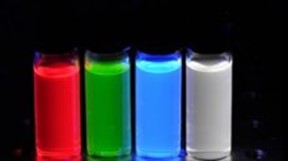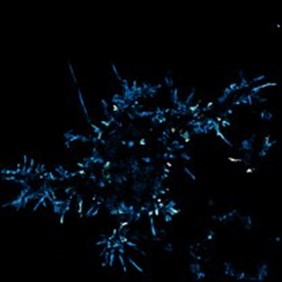
The 2023 Nobel Prize in Chemistry was awarded to Moungi G. Bawendi, Louis E. Brus and Alexei I. Ekimov “for the discovery and synthesis of quantum dots”. These tiny particles can emit very bright colored light and are used in electronics and medical imaging.
Quantum dots are nanometer size semiconductors whose optical properties can be tuned with size. They are chemically synthesized at very high temperatures to allow for the nucleation of the nanocrystal, and then the temperature is dropped below the nucleation temperature to allow a single size of the nanocrystal to grow. They are called quantum dots because their optical properties originate from quantum confinement.

Researchers in VINSE have been working on quantum dots for nearly 30 years. VINSE contributions to quantum dot research include Sandra Rosenthal’s work discovering white light emitting quantum dots, quantum dots are so small they emit the entire visible spectrum of light. These white light emitting dots were incorporated in photoluminescent and electroluminescent LEDs.
Quantum dots are now used commercially in QLED flat panel displays and play an important role in biological imaging. Because they are a semiconductor they do not photobleach (fade). This means that you can attach a quantum dot to a biological molecule, for example a membrane protein, and the quantum dot serves a beacon to follow the movements of the protein with fluorescence microscopy.
VINSE currently supports the commercial development of quantum dots by imaging their structure and chemical composition with the Tecnai Osiris TEM/STEM. For more information on VINSE capabilities related to quantum dots, contact Dr. James McBride.
Author: Sandra Rosenthal, Jack and Pamela Egan Professor of Chemistry
Published by: World Scientific Education
